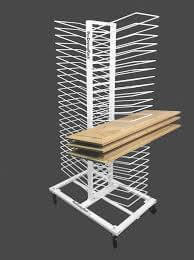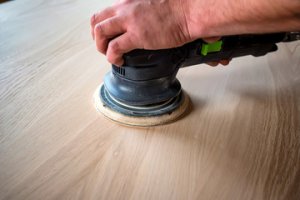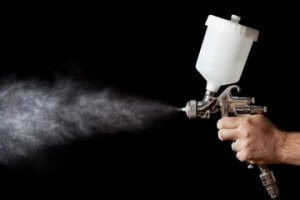
What to look out for when getting quotes
The main things to look out for when shopping around for quotes
The video shows you the main things to look out for when getting quotes. The rest of the page goes into it in more detail, so whether you’re a video person or a reader, we’ve got you covered. The video primarily deals with getting quotes for spraying your kitchen, but if you want a quote to have your UPVC windows sprayed, don’t be put off. A lot of the points made apply to those as well, especially in the written version. So read on.
If you’ve already had a couple of quotes, they’ll fall into one of two camps. On one hand you’ll have companies who’ll promise to do the job in one day and charge you a lower price, on the other you’ll have companies who say it’ll take 3, 5, I‘ve even heard of TEN days but who want to charge you a lot more.
Why 3, 5, even TEN days????
Let’s look at this second camp first. When getting quotes for spraying your kitchen these companies will tell you they’ll take your cabinet doors away to their workshop where they’ll receive half a dozen coats in a temperature-controlled spraying booth before being baked in a kiln of some sort. Well, all that might be true, but the reality is that the self-priming paints we all use nowadays are so advanced, two topcoats are all that’s needed.
Anything more is a waste of the sprayer’s time and your money. And your doors CERTAINLY don’t need to be baked in a kiln. The paints used are typically very quick-drying and it won’t add anything to the durability of the finish.
If they insist that it will, you can test them by asking if they’ll give you a longer guarantee in that case. Virtually everyone passes on the paint manufacturers’ ten-year guarantee. We also give the same guarantee on the spraying. Again, ask if they’ll do the same.
Often the real reason their process takes so long is simply that it’s inefficient. Typically, companies that take this long will lay a door flat and spray one side, then place it in a drying rack until it’s dry before turning it over and doing the same to the reverse. Now with 15 doors and half a dozen coats of paint, you can imagine just how long all that takes. Which is why the half a dozen coats are an unnecessary disadvantage, not a benefit.
I’m hesitant to say it, but sometimes I think they attempt to turn a vice into a virtue and dress up an inefficient way of doing things as a benfit in order to charge a higher price. The other major disadvantage of course is that you’re without a fully-functioning kitchen for the 3,5 or 10 days the doors are away.

How are they going to do the sanding?
At the less expensive end of the scale the advantage is everything’s done and dusted in a day and it costs a lot less. But you have to be careful that they’re not cutting corners in some way.
Maybe slapdash masking (because that actually can take longer than the spraying, so it’s an obvious corner to cut), maybe using inefficient spraying equipment (see below for more details), maybe skipping the sanding, maybe using inferior paint so that the finish looks great at the end of the afternoon but won’t last more than a couple of years before it starts flaking off. If that happens, good luck in chasing up the ten-year guarantee you’ve been given.
The other big downside of having your doors sprayed in situ – the cabinets obviously have to be done where they are, the doors are another matter – is the potential mess if the job isn’t done properly. If they’re not going to take the doors off for spraying, they’ll have to sand them where they are, and this will create huge amounts of dust. A vacuum attachment on the sander helps, but it can’t get rid of all the dust. I’ll explain how we deal with this problem a little later on.

There’ll be dust in the air for at least twelve hours, which means it will be settling on your beautifully-sprayed doors and cabinets long after they’ve packed up and left, giving you the dreaded ‘orange peel’ effect instead of the flawless finish you want.
Even worse is if they don’t sand at all, or give it a cursory rub down with a piece of sand paper. Spraying is unforgiving when it comes to the slightest blemish. Anything – the slightest mark – will stand out like a sore thumb. Your kitchen cabinets and doors NEED to be sanded thoroughly.
Fortunately, we have a way of dealing with htis problem, which you can read about below when I outline how we do things.
Sanding is just as essential when spraying UPVC windows and doors. Spraying is unforgiving and will show up the slightest mark por blemish, so to get that perfectly smooth, flawless finish, they need to be sanded.
What spraying equipment are they planning to use?
The other big disadvantage of spraying the doors when still on their hinges is overspray, which is what we call paint going where it shouldn’t. This can obviously be lessened considerably with thorough masking of anything that doesn’t need spraying, but the amount will also be affected by the type of spraying equipment used.
(NB: Overspray is alo a potential problem when spraying UPVC windows and doors.)
Without getting too technical, there are two types: airless and HVLP. Airless equipment uses a compressor to squirt paint through the gun nozzle at very high pressure. The spray is 100% paint and it’s VERY fast. Which is great for the sprayer, because it gets the job done faster. But it’s not so great for you, because a spray like that is much harder to control and you end up with overspray. A lot of the paint (sometimes as much as 75%) can ‘bounce off’ the surface due to the high pressure of the jet.
There’s nothing wrong with airless equipment (it can cost a lot more than HVLP), but it’s main benefit is speed. And that’s not necessarily a big benefit to you. We’d use airless equipment if we were spraying large areas like a wall with emulsion, where precision isn’t so important, but for a job that requires precision, we think HVLP is better (although a bit slower). Because of this, for kitchens we use HVLP (High Volume, Low Pressure) sprayers, which produce a very fine atomisation that’s a mixture of paint and air.
This produces a better finish but it also means it takes slightly longer to spray your cabinets and doors. However, we think it’s worth it as we compensate for this in other ways (read about our efficient, streamlined process here) and it enables us to control the spray much more effectively, so the chances of overspray in your kitchen are greatly reduced and a much higher percentage of the paint actually sticks to the door or cabinet due to the lower pressure used, instead of ending up in the air.
An added benefit is that HVLP sprayers are much, much quieter than airless ones, so you won’t be deafened by us working in the kitchen while you’re watching TV in the lounge!
Our advice is: if you’re worried about overspray in your kitchen, pick a company that uses HVLP sprayers.

How do we do it at SuperSpray (Liverpool)?
Unless your kitchen’s significantly larger than average we’ll finish spraying it in 1 or 2 days. But we’ll do it without any of the disadvantages outlined above. And we don’t charge extra, either. You can see our prices for spraying kitchens here, and for spraying UPVC windows here.
Firstly, using top quality 2-pack paint that’s mixed with a special chemical hardener (it’s the same paint that’s used on cars), we’ll give everything two topcoats. With the speciality paints we use you simply don’t need half a dozen coats, take it from me. OUR ten-year guarantee isn’t just the paint manufacturer’s guarantee being passed on to you, it covers our work as well, not just the paint.
Secondly, just like the much more expensive companies, we remove the doors and drawers, but we don’t take them away and keep them for days. We sand, spray and dry them on site. We get around the dust problem by erecting a small sanding booth (it looks a bit like a pop-up tent) in the kitchen or outside if there’s a lack of space and the weather allows. All doors and drawers are sanded inside it, which means the amount of dust contaminating your kitchen is almost eliminated. Especially when our portable extractor fan sucks it all outside.
(NB: We do this when and where space permits, in an attached dining area where we can remove the furniture, and unfurnished spare room, a garage or even the garden when weather permits. However, sometimes there isn’t the space and the doors and drawers have to be sprayed in situ.)
As soon as they’re sanded, the sanding booth is collapsed, removed and replaced by a similar spraying booth, inside which we (yes, you guessed it) spray them, completely eliminating the risk of overspray. As already mentioned, we use HVLP sprayers which takes us slightly longer, but helps with this. Again, any overspray is whisked outside by the extractor fan.
The reason we can do all of this in 1-2 days without cutting corners is that instead of spraying one side of a cabinet door and then placing it on a drying rack to dry before we can turn it over and do the other side (which as I’ve already said is a unnecessarily lengthy process) we hang the doors in the booth vertically and spray both sides at the same time.This saves a huge amount of time.
Summary - 3 main questions to ask when getting quotes for spraying your kitchen
- If the doors and drawers are being taken away for several days, ask them to justify it. For every extra day, the cost will rise. You’ll be told something about them giving several coats of paint and being baked dry in a kiln (all of which, remember, is unnecessary). If so, ask them if that means a longer than 10-year guarantee. If they claim their process leads to a more durable finish, they should put their money where their mouth is and give you a longer guarantee.
- If the doors aren’t being taken away, are they removing them for sanding and spraying or are they planning to do that with them still on their hinges? Regardless of the answer, how are they planning to minimise both dust and overspray? If all you get in reply is “We’ll be careful,” or “It’s OK, we’ve been doing this for years,” be wary.
- What equipment are they planning to use? Remember the benefits of Airless equipment accrue to them, not to you.

